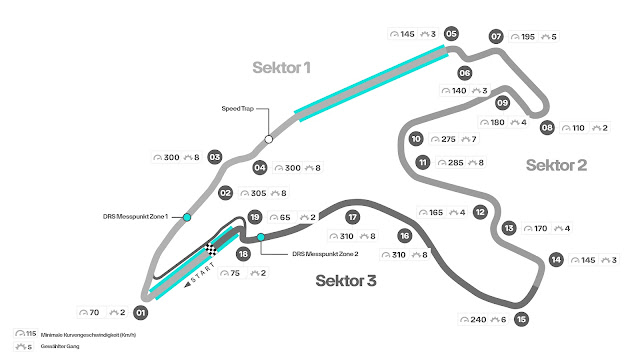Formula One - Mercedes-AMG PETRONAS F1 Team, 2023 Hungarian GP. Lewis Hamilton
Hungary was a weekend of highs and lows. Our pace was strong on Saturday and Sunday, but we didn’t maximise that across the weekend. Lewis produced a brilliant lap to take pole position. However, on Sunday, we were too conservative with some of our decisions and ultimately missed out on a podium. George meanwhile was compromised in qualifying but drove a strong race from P18 to take P6.We also encountered cooling limitations across both cars; we likely had the second-fastest car, but we must execute better if we are to deliver our full potential. Nevertheless, we scored good points with both drivers, and consolidated our P2 championship position.
We will be aiming to turn those learnings into actions for this weekend. Spa-Francorchamps is a classic venue and a true challenge for both the cars and drivers, especially in the Sprint format with such limited practice time on a long and challenging lap.
We will be bringing updates this weekend as part of our ongoing development programme. We hope this will be another small step forward in improving the W14. As we have seen at many races this year though, it is hard to predict where we will be relative to our competitors. Wherever the true pace of our car is here, we want to maximise the outcome in this final race before the summer shutdown.
Fact File: Belgian Grand Prix
- Spa-Francorchamps is the longest circuit we visit, measuring 7.004km.
- Given the length of the track, it is perhaps no surprise that the Grand Prix has the lowest number of race laps at just 44.
- That is six less than the next lowest which are Saudi Arabia and Las Vegas which feature 50 laps.
- Despite several long, flat-out sections, Spa is middle of the pack when it comes to fuel consumption. Constant stop/start is what uses the most fuel, so tracks such as Hungary where we raced last week are higher on fuel consumption.
- Tyre duty and wear are some of the greatest of the season at Spa, with high averages across all four corners of the car.
- The long lap distance brings with it a few unique challenges. For example, if a car gets damaged early in the lap, more time is lost getting back, and the weather is very changeable so conditions can vary massively from corner to corner.
- It also means that the lap takes longer to complete, therefore you can’t fit as many laps into practice and qualifying run plans to test different setup configurations. That will be of particular interest this weekend with the Sprint format and parc fermé conditions after FP1.
- The distance from pole position to the braking zone to the first corner at La Source is just over 150 metres so there is limited opportunity to gain positions immediately off the line.
- However, from the exit of La Source to the braking zone for Les Combes, the drivers have their foot firmly on the throttle for over 20 seconds (and 1,875 metres) of track layout.
- Because of this flat-out section, the exit of La Source is incredibly important, as it leads down the long straight to Eau Rouge and Raidillon.
- There’s a difference of around 100 metres between the highest (Les Combes, Turn 7) and the lowest point (Stavelot, Turn 15) on the track, the highest elevation change of the season.
- The first and third sectors at Spa feature long straights and flat-out sections, but the second sector is twisty. This makes it challenging to find the right balance and set-up compromise, particularly with the wing level. A bigger wing will gain time in the middle sector but leave you vulnerable on the straights, while a smaller wing will provide less drag for the flat-out sections but not providing the same level of grip in the twisty corners. This is a similar predicament to Baku.
Insight: Preparing for the Shutdown
The summer shutdown, introduced several years ago, is a mandated two-week break that all teams must observe. No F1 activities may take place and is incredibly important in enabling team members time to recharge ahead of the second half of the season. “In my opinion, it’s one of the best rules that has been brought into Formula One,” says Rob Thomas, Chief Operation Officer.
"It’s not easy to suddenly switch off and then suddenly go again. It’s quite unique to have to do this mid-season,” Ron Meadows, Sporting Director, comments. What does it take then for an F1 team to efficiently come to a halt, and then restart rapidly and get back racing? We spoke with Rob, Ron, and Chief Technical Officer Mike Elliott, to find out more.
Watch the full video here. The full video, including broadcast versions, along with transcript, can be downloaded here.












